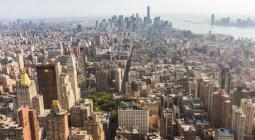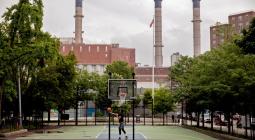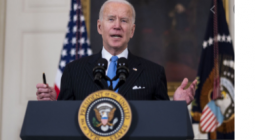New York's outgoing climate tsar hopes Biden can help save city from sea rise.
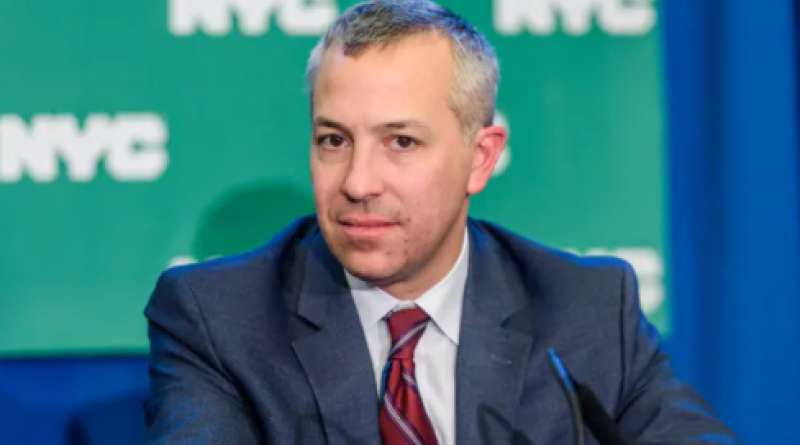
Daniel Zarrilli is leaving New York’s top climate post after eight years and says more needs to be done to tackle fossil fuels.
Following an eight-year tenure as New York City’s climate tsar, a tumultuous period when the city faced Superstorm Sandy and charged headlong into a legal battle with fossil fuel companies, Daniel Zarrilli is departing his position.
A long-term city employee and ally of Mayor Bill de Blasio, Zarrilli said it was the “right time to move on and hand over the reins” by resigning as New York City’s top climate adviser and moving on to an unspecified role that will also work on the climate crisis.
Zarrilli said a departing hope was that Joe Biden’s administration would kickstart efforts to help New York City stave off the growing menace of sea level rise and fierce storms.
An ambitious, $119bn plan to protect the largest US city from flooding via a series of man-made islands with retractable gates that would erect a six-mile wall to halt surging stormwater was scrapped as an option by the federal government last year after Donald Trump called it “foolish” and advised New Yorkers to get “mops and buckets ready”.

“That longer-term study was canceled but we are seeing more partnership with the federal government again,” Zarrilli said. “We’re hopeful the infrastructure bill will be a major climate bill that will be to the benefit of New York and cities around the world. It’s been a remarkable whiplash; we were fighting off the federal government for four years due to its reckless leadership. We will now see more flood defenses in the city – we are already under way with that.”
Zarrilli, an engineer by training who lives on Staten Island, has grappled with a stampede of climate issues since he was appointed by the then mayor Michael Bloomberg in the wake of Sandy, which plunged parts of New York City into darkness and devastated homes in low-lying parts of the city. A long-term strategy to make the city more resilient to the ravages of global heating was drawn up, along with a new effort to confront environmental injustices that see low-income people of color disproportionately suffer from the onset of heatwaves and flooding.
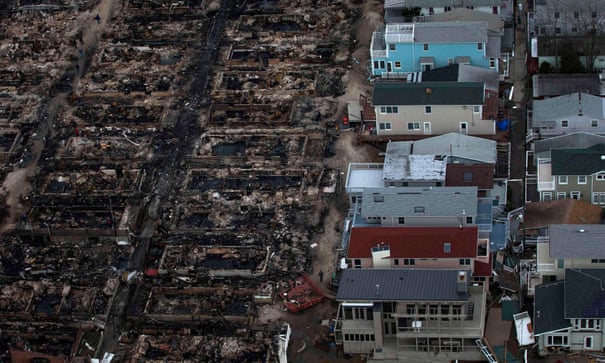
New York City also aligned itself with the goals of the Paris climate agreement after Trump pulled the US out of the accords. Most recently the city banned the installation of gas appliances in new buildings as part of its goal to slash planet-heating emissions by 40% within the next decade.
De Blasio said that Zarrilli had been “an invaluable member of my team” throughout this work. “We have charted a course to more sustainable and more resilient future and New York City is better off for his service,” the mayor added.
Latterly, New York City has sought to use wield its influence to directly fight the fossil fuel companies responsible for the climate crisis. A lawsuit suing large oil and gas companies for their role in the crisis ultimately ran aground but the city has since divested its pension funds of billions of dollars’ worth of fossil fuel stock and has sought to boost its investments in renewable energy.
“Dan did remarkable work helping coordinate efforts to get New York to divest its pension funds, and then to take that idea and help spread it to other cities,” said Bill McKibben, co-founder of the climate group 350.org. “It’s been a really important part of the global climate fight in recent years.”
This city has faced some criticism that it should have gone further, particularly regarding the use of cars. De Blasio previously dismissed the idea of a congestion charge for drivers to help reduce traffic and emissions, despite research showing it would help cut both, and was initially reluctant to make permanent the closure of certain streets to cars during the pandemic, a development that has allowed on-street dining and walking to flourish.
Zarrilli conceded there was “definitely more to be done so New Yorkers don’t need cars in the future” but said further change was inevitable if the city, among others, was to avoid the worst impacts of the climate crisis.
“We are in much better shape than we were after Sandy but we have to say no to fossil fuels in all their forms across society,” he said. “We are very aware of our vulnerabilities to flooding and to heat, but there are opportunities in reimagining a clean energy future too.
“Other cities look to New York City as a leader – being the media and cultural capital of the world gives us a wide audience. The stakes are always high here. After 17 years with the city, it’s been an amazing run.”
2 April 2021
The Guardian

